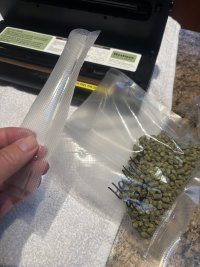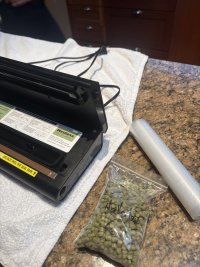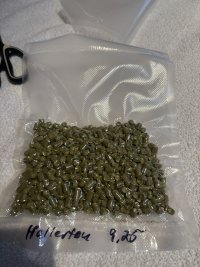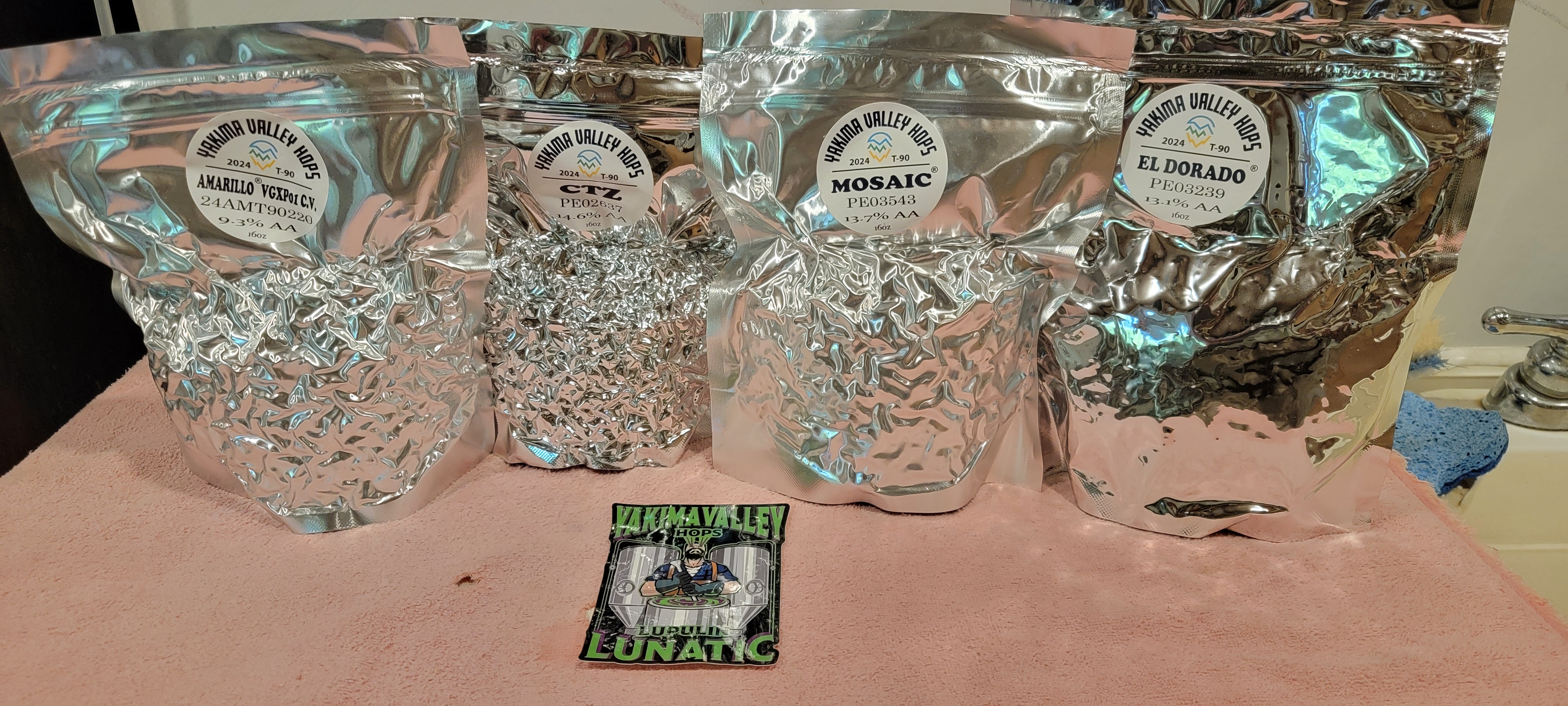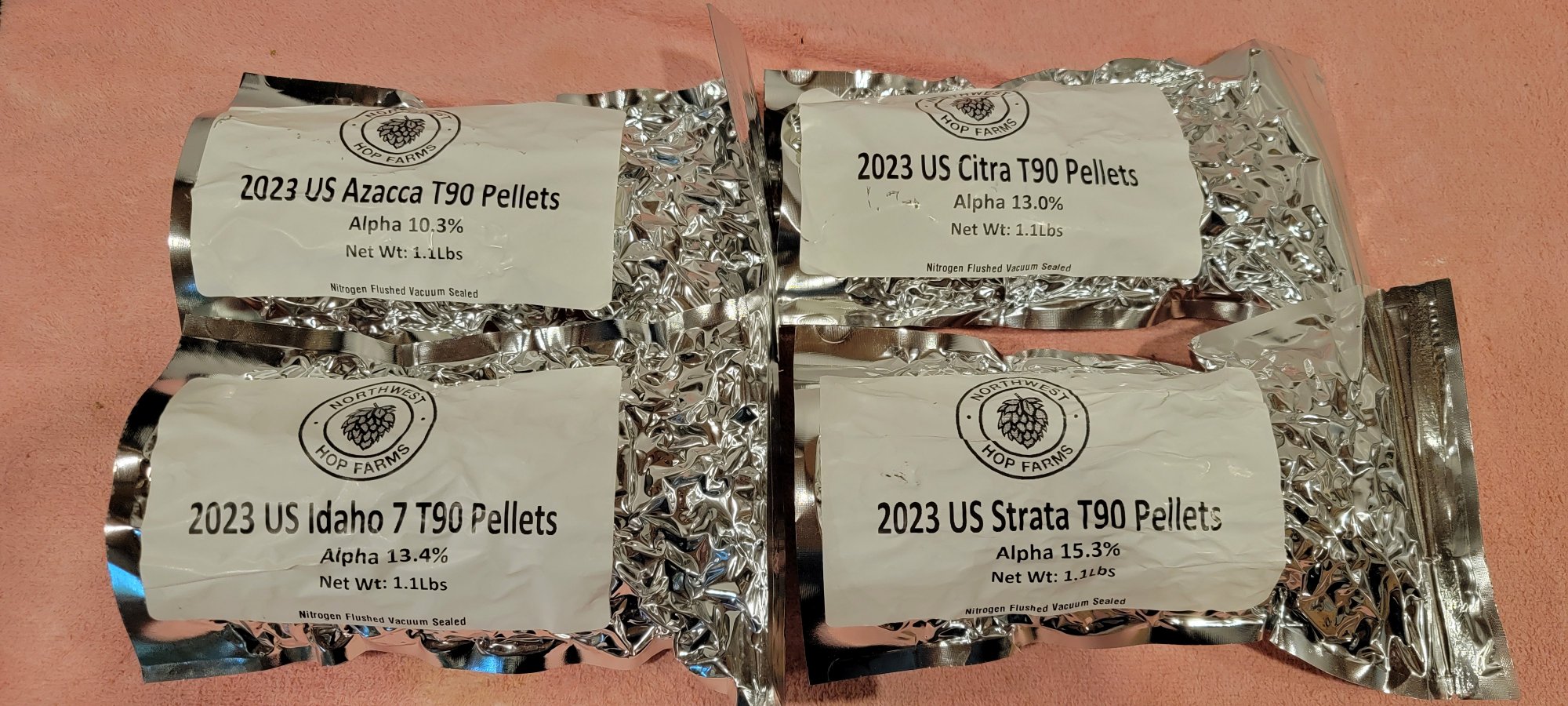- Joined
- May 6, 2025
- Messages
- 289
- Reaction score
- 224
Pellets stored in glass jars, purged with co2 and frozen?
I read about how well frozen hop pellets last in the freezer. And I have a vacuum pack machine.
But the vacuum bagging method is not convenient. I have to open a bag containing many ounces of pellets, just to use one ounce. And bagging tiny amounts also seems inconvenient.
So how about a mason jar, pour the pellets in, purge with co2 then put the lid on, and put in the freezer. Then I can take out a tiny bit of pellets for a batch and immeditely return the jar to the freezer.
Seems better than vacuum bagging.
What do you think?
I read about how well frozen hop pellets last in the freezer. And I have a vacuum pack machine.
But the vacuum bagging method is not convenient. I have to open a bag containing many ounces of pellets, just to use one ounce. And bagging tiny amounts also seems inconvenient.
So how about a mason jar, pour the pellets in, purge with co2 then put the lid on, and put in the freezer. Then I can take out a tiny bit of pellets for a batch and immeditely return the jar to the freezer.
Seems better than vacuum bagging.
What do you think?













































![Craft A Brew - Safale S-04 Dry Yeast - Fermentis - English Ale Dry Yeast - For English and American Ales and Hard Apple Ciders - Ingredients for Home Brewing - Beer Making Supplies - [1 Pack]](https://m.media-amazon.com/images/I/41fVGNh6JfL._SL500_.jpg)
